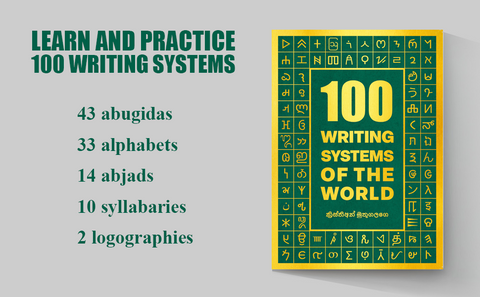Title: The Enchanting Thai Script: A Journey into Thailand's Cultural Heritage

Introduction: Embark on a fascinating journey as we explore the captivating Thai script, an intricate and beautiful writing system that has been an integral part of Thailand's cultural identity for centuries. With its unique features and rich history, the Thai script continues to play a crucial role in preserving the Thai language and literature.
1. Script type: The Thai script is an abugida, which means that each character represents a consonant sound with an inherent vowel. Vowel signs and diacritical marks are used to change the inherent vowel sound.
2. Writing direction: Thai is written from left to right, following the standard left-to-right direction, similar to English and many other languages.
3. Creator and invention time: The Thai script's origins are believed to date back to the 13th century during the Sukhothai Kingdom (1238-1438 CE). It was King Ramkhamhaeng the Great who is credited with the creation of the Thai script, making him its creator. However, there is some debate among historians regarding the exact role of King Ramkhamhaeng in the script's invention.
4. Time period of use: The Thai script has been in use for several centuries, and it has remained a constant presence in Thai society since its inception.
5. Population and current usage: The Thai script is actively used by the population of Thailand today. It serves as the official script for the Thai language and is employed extensively in daily communication, literature, official documents, and signage.
6. Usage area: The Thai script is predominantly used in Thailand, a Southeast Asian country renowned for its rich cultural heritage, beautiful landscapes, and vibrant traditions.
Interesting Facts and Cultural Significance:
-
Elaborate and Complex: The Thai script is known for its intricate characters, and its complexity lies in the various tone markers and vowel signs that add nuances to pronunciation.
-
Pali Influence: The Thai script incorporates several characters from the Pali language, an ancient Indian language used in Buddhist scriptures.
-
Beloved Cultural Symbol: The Thai script holds significant cultural and national importance, representing the Thai people's identity and history.
-
Decorative Use: The Thai script is often used decoratively in various forms of art, architecture, and cultural exhibits, reflecting the nation's pride in its language and heritage.
-
Royal Inscriptions: Ancient Thai script can be found on historical artifacts and royal inscriptions, providing valuable insights into Thailand's past and its cultural development.
Conclusion: The Thai script is not merely a writing system but a testament to Thailand's rich cultural legacy and linguistic heritage. As we admire the elegance and intricacy of the Thai characters, we honor the creativity and ingenuity of King Ramkhamhaeng the Great, whose vision has left an indelible mark on the Thai nation. Today, the Thai script continues to flourish, acting as a powerful tool in preserving the Thai language and carrying forward the stories and traditions of this enchanting Southeast Asian kingdom.

Practice Thai and other scripts with our book "100 Writing Systems of the World"!
Discover 100 diverse writing systems from around the globe in one captivating book. Practice writing different scripts with full character charts and essential information provided. Let your imagination soar on the blank right pages as you explore 43 abugidas, 33 alphabets, 14 abjads, 10 syllabaries, and 2 logographic scripts. Dive into numeral systems and even design your own writing system. Immerse yourself in the beauty and diversity of global scripts today with "100 Writing Systems of the World." Unleash your creativity and order now!